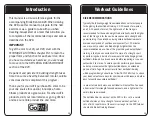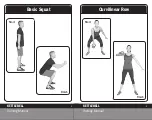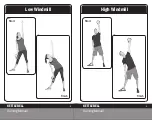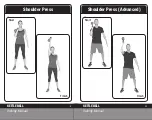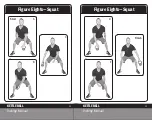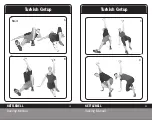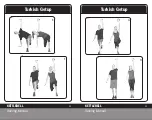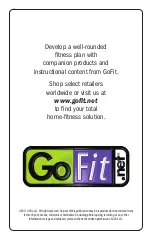
Workout Guidelines
4A
COMPONENTS OF A KETTLEBELL:
HANDLE:
top grip of the U-shaped shaft
HORNS:
sides grip of the U-shaped shaft
BALL:
the round, weighted bottom of the kettlebell (where the
kettlebell stores the vast majority of its weight)
SAFETY ESSENTIALS:
• It is a good idea to perform kettlebell exercises in the
grass or on a floor surface that if the momentum of the
bell overpowers you, you can release the bell and let it fall
• Watch the included Kettlebell DVD in its entirety before
exercising with your kettlebell for the first time
• Discontinue if you feel undue pain
• Have a towel and water bottle ready, and allow yourself to
take intermittent breaks
• This or any workout may result in injury; to reduce the risk
of injury, consult your physician before exercising with this
equipment
Workout Guidelines
TECHNIQUE ESSENTIALS:
-Powerfully thrust your hips forward to drive the kettlebell out in
kettlebell swings. Practice this movement without a bell, initially,
to learn the sensation.
A good training technique is to practice freestanding vertical
leaping, since a kettlebell swing recruits the same muscles and
hip motion as a vertical leap; the primary difference between
these exercises is that the energy will be transferred to the bell
instead of the body with a swing.
-Allow your arms to simply be the ropes that the kettlebell swings
on. The primary muscles driving the kettlebell out in swings should
be the buttocks and thighs, not the shoulders. The bottom of the
ball should face out (not down) at the top of the swing.
Try choking a towel around the handle as a training tool to learn
this technique.
-Never, ever, under any circumstances should you round your back
while performing kettlebell swings, snatches, or any other powerful
momentum-driven kettlebell exercise
-When squatting, press your weight into your heels, keep your
chest lifted, and maintain neutral spine
-Always keep your core muscles engaged while performing
kettlebell exercises
-Be sure that you continue to breathe without interruption
5A



